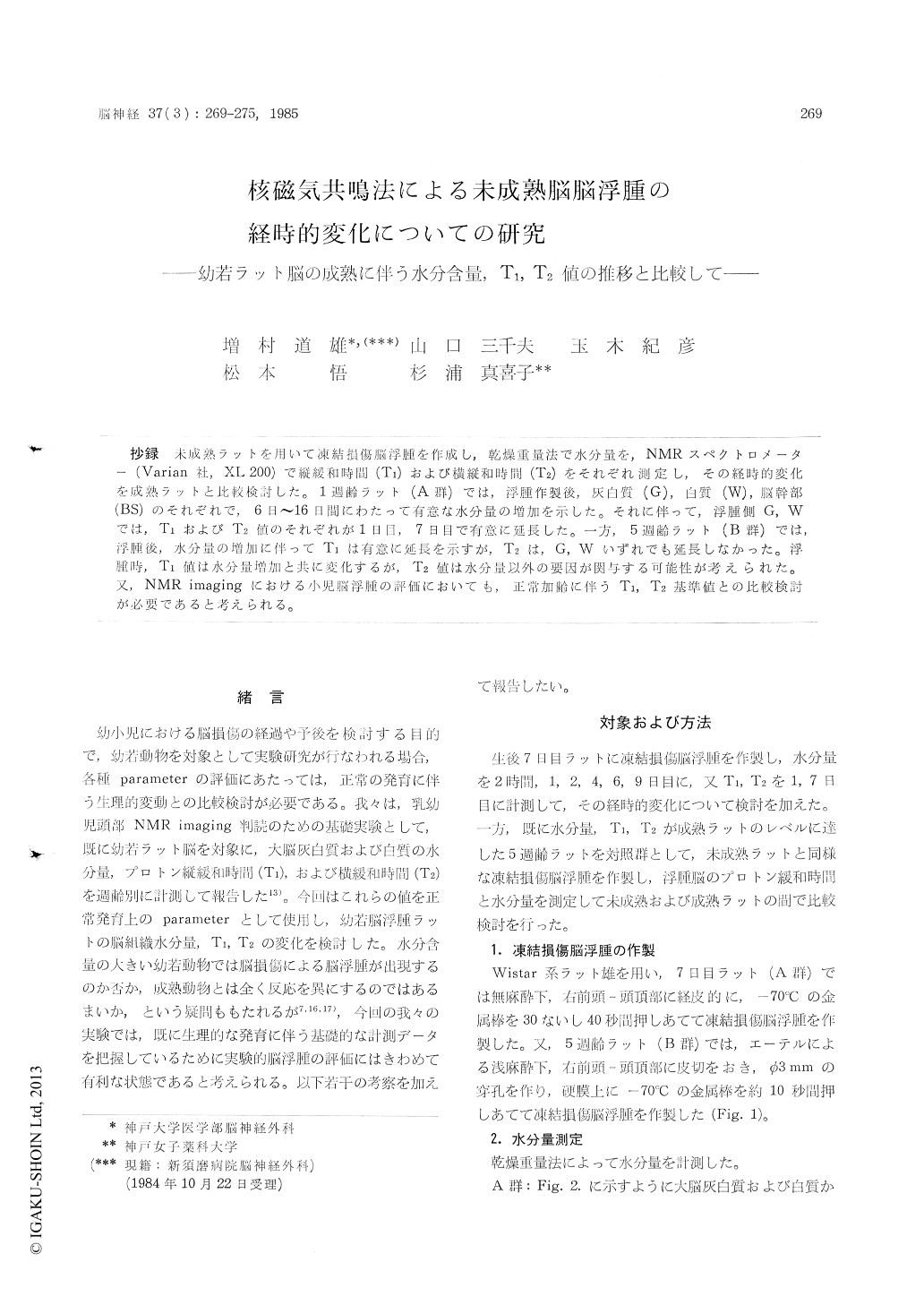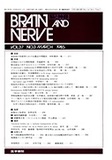Japanese
English
- 有料閲覧
- Abstract 文献概要
- 1ページ目 Look Inside
抄録 未成熟ラットを用いて凍結損傷脳浮腫を作成し,乾燥重量法で水分量を,NMRスペクトロメーター(Varian社,XL200)で縦緩和時間(T1)および横縦和時間(T2)をそれぞれ測定し,その経時的変化を成熟ラットと比較検討した。1週齢ラット(A群)では,浮腫作製後,灰白質(G),白質(W),脳幹部(BS)のそれぞれで,6日〜16日間にわたって有意な水分量の増加を示した。それに伴って,浮腫側G,Wでは,T1およびT2値のそれぞれが1日目,7日目で有意に延長した。一方,5週齢ラット(B群)では,浮腫後,水分量の増加に伴ってT1は有意に延長を示すが,T2は,G,Wいずれでも延長しなかった。浮腫時,T1値は水分量増加と共に変化するが,T2値は水分量以外の要因が関与する可能性が考えられた。又,NMR imagingにおける小児脳浮腫の評価においても,正常加齢に伴うT1,T2基準値との比較検討が必要であると考えられる。
Traumatic cerebral edema was experimentally produced in immature Wistar strain rats aged 7 days (Group A), and then edematous cerebrums were lyophilized. The water content was measur-ed by the dry weight method. The longitudinal relaxation time (T1) and transverse relaxation time (T2) were measured on the NMR spectrome-ter. In respect to the measured water content and the relaxation time, changes with time were compared with those in matured rats aged 5 weeks (Group B).
In the Group A, the water contents of the gray matter (G), the white matter (W), and the brain stem (BS) increased significantly over the period ranging from 6 to 16 days after the experimental production of cerebral edema. In the Group B, the water contents of G and W also increased significantly one day after the experimental pro-duction of cerebral edema.
One day atter development of the experimental edema, T1 was 1.770±0.131 sec (G) and 1.752± 0.131 sec (W) in the Group A, while it was 1.451±0.003 sec (G) and 1.353±0.011 sec (W) in the Group B. On the other hand, T2 was 96.95± 11.98 msec (G) and 92.80 ± 8.78 msec (W) in the Group A, while it was 57.90±1.32 msec (G) and 58.50±0.98 msec (W) in the Group B. In other words, the relaxation time was significantly pro-longed in the Group A. The extent of the prolon-gation was insignificant in the Group B consider-ing the base line.
T2 is assumed to be divided into two compo-nents in the cerebral tissues when cerebral edema develops. Thus, it is feared that we might have determined so-called "more rapid component". In the present study, it was ascertained, however, that the "more rapid component" also was pro-longed when the cerebral edema developed in immature rats.

Copyright © 1985, Igaku-Shoin Ltd. All rights reserved.


